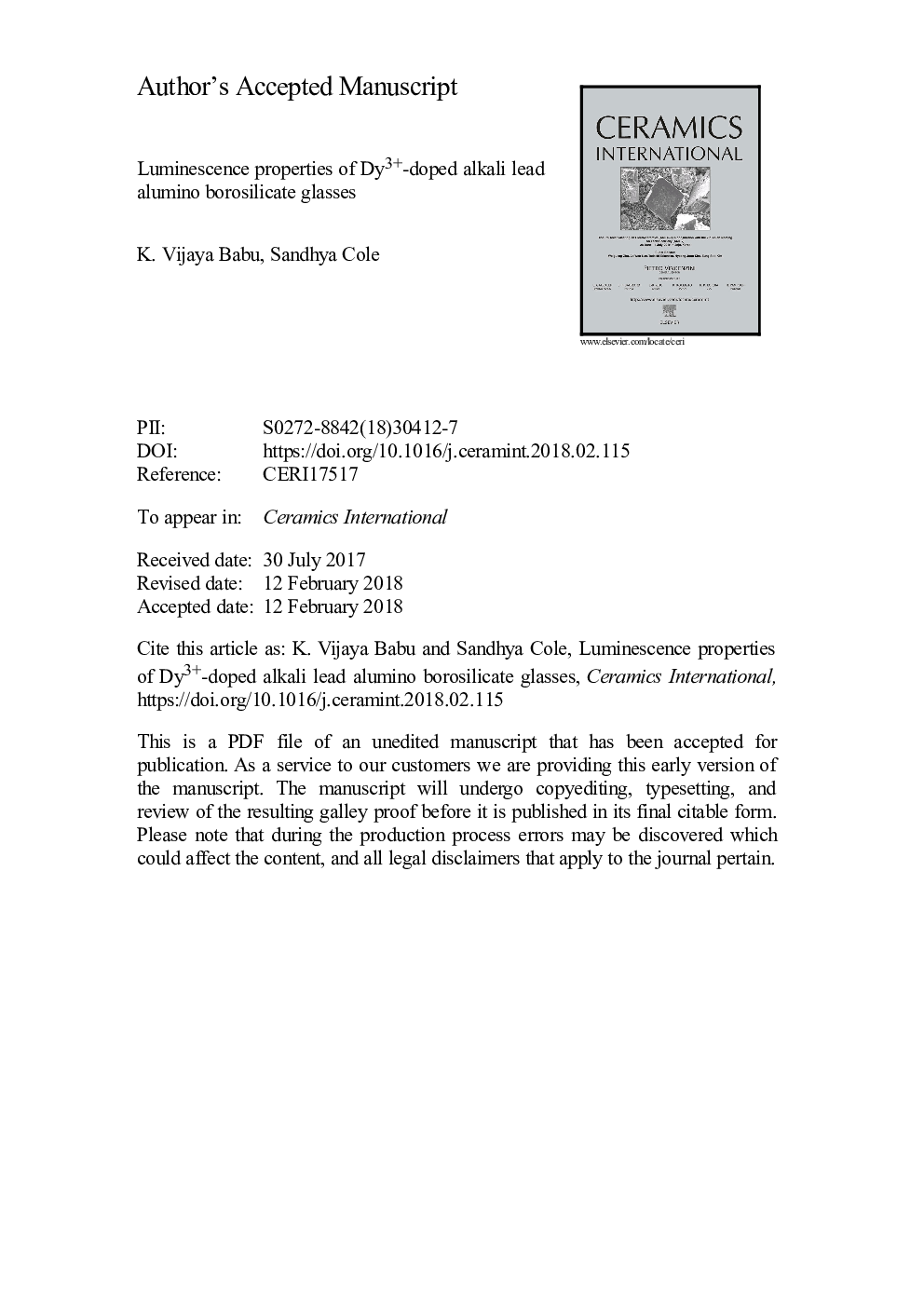| کد مقاله | کد نشریه | سال انتشار | مقاله انگلیسی | نسخه تمام متن |
|---|---|---|---|---|
| 7887568 | 1509790 | 2018 | 42 صفحه PDF | دانلود رایگان |
عنوان انگلیسی مقاله ISI
Luminescence properties of Dy3+-doped alkali lead alumino borosilicate glasses
دانلود مقاله + سفارش ترجمه
دانلود مقاله ISI انگلیسی
رایگان برای ایرانیان
کلمات کلیدی
موضوعات مرتبط
مهندسی و علوم پایه
مهندسی مواد
سرامیک و کامپوزیت
پیش نمایش صفحه اول مقاله

چکیده انگلیسی
A new series of Dy3+-doped sodium lead alumino borosilicate glasses are prepared by the melt quenching technique with the chemical composition 20Na2O- 10PbO-(5-x)Al2O3-40B2O3-25SiO2-xDy2O3 (where xâ¯=â¯0, 0.5, 1.0 and 1.5â¯mol%) and are characterized by various spectroscopic techniques such as XRD, FT-IR, Optical absorption spectra, Fluorescence spectra and Decay measurements. Optical and Luminescence spectra of all the glasses are recorded at room temperature. From the optical absorption spectra, optical band gap and Urbach energies of Dy3+-doped titled glasses have been evaluated. The oscillator strengths and the intensity parameters, Ωλ (λâ¯=â¯2, 4 and 6) are calculated using Judd-Ofelt analysis. The various lasing parameters like transition probability (AT), branching ratio (βR), stimulated emission cross-section (Ïe) and the radiative lifetime (Ïrad) for different emission levels of Dy3+ ions have been evaluated. Fluorescence spectra show sharp emission peaks are observed at 482â¯nm (blue), 575â¯nm (yellow) and 665 (red) under 385â¯nm excitation, which are attributed to 4F9/2â6H15/2, 6H13/2 and 6H11/2 transitions respectively. The yellow-to-blue intensity ratio (Y/B) increase up to 1.0â¯mol% Dy3+ ion content and beyond it decreases because of concentration quenching which occurs due to the energy transfer between Dy3+ and Dy3+ ions. The x, y coordinates of the prepared glasses pass through the white light region in the CIE 1931 chromaticity diagram. The results reveal that these glasses emit quality white light which is suitable for the development of W-LEDs. The color purity and the correlated color temperature (CCT) are also calculated for the present work. Various physical parameters such as density, refractive index, and ion concentration etc., are calculated. Among the prepared glasses, NPABSDy10 glass exhibits higher Ïe, βR, ÏexÏR, and ÏexÎλeff values corresponding to the 4F9/2â6H13/2 emission band and these are in turn specifies its suitability for W-LEDs and visible laser applications.
ناشر
Database: Elsevier - ScienceDirect (ساینس دایرکت)
Journal: Ceramics International - Volume 44, Issue 8, 1 June 2018, Pages 9080-9090
Journal: Ceramics International - Volume 44, Issue 8, 1 June 2018, Pages 9080-9090
نویسندگان
K. Vijaya Babu, Sandhya Cole,